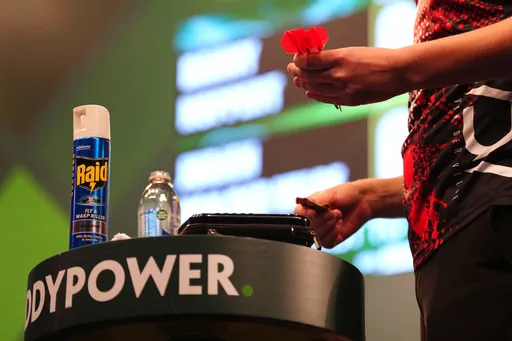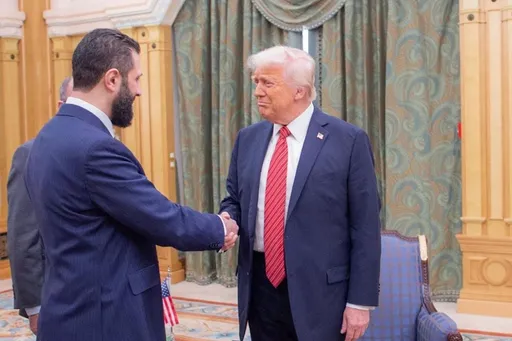It has been eleven years since the Libyan people took to the streets and revolted against the country’s long-ruling dictator, Muammar Gaddafi, to have a democratic country that would provide equality, democratic rights and a democratically elected government.
The revolution against Gaddafi’s rule was a major step towards establishing a democratically administered country, but civil war, several failed transitional governments and regional and foreign interference has brought Libya no closer to elections and democratic rule.
Here is a timeline of events to understand how the country got to this point.
2011: Square one
In February, following the Arab Spring’s unstoppable advance across the region, Libyans started to revolt first in Benghazi and demonstrations spread to other cities leading to clashes between Gaddafi’s security forces and the opposition.
The UN Security Council in March announced its decision to establish a no-fly zone over the country and airstrikes to protect civilians started under NATO’s command.
At first, the opposition captured some territory but were then repelled by Gaddafi’s forces.
The National Transitional Council (NTC) was formally recognised internationally as the legitimate government in the country in July. A month later, in August, Gaddafi went into hiding when anti-Gaddafi rebels overwhelmed Tripoli.
In the following weeks, the African Union in addition to 60 countries announced its decision to recognise the NTC in Libya.
On October 20, Gaddafi was captured and killed when the opposition took control over Sirte. Days after Gaddafi’s killing, the NTC declared Libya as a ‘liberated’ country and announced its plans to hold elections within 8 months.
2012 and 2013: Crimes and oil
The US ambassador along with three US citizens were killed by extremist militants in the country. A year later, in 2013, a blockade on oil exports was undertaken by the Petroleum Facilities Guard militia.
2014: Civil war begins
When the General National Congress refused to disband despite the expiration of its mandate, protests raged. The blockade on two oil terminals was lifted in April. In the following month, Libyan Warlord Khalifa Haftar’s self-styled Libyan National Army (LNA) launched a military operation against extremist groups in Benghazi while trying to take control of the parliament building. During this period, the warlord accused then Prime Minister Ahmed Maiteq of collaborating with the extremists.
Following Haftar’s military operation on Benghazi and threats against Maiteq, he resigned following the supreme court’s decision to render his appointment illegal.
A new parliament with a low level of voter participation was chosen which triggered a fight between the GNC and the new one.
Following the developments, in June, the security situation on the ground worsened and a UN crew was pulled out from Libya which was followed by the closure of embassies and Tripoli airport was destroyed in fighting between warring parties.
2015: Geneva talks
The warring parties in the east and west declared a fractional ceasefire as an outcome of the UN-sponsored Geneva talks in January.
Warlord Haftar’s self-styled LNA failed to retake Derna from the Daesh terror group in March. Daesh later established further control over Sirte - a strategic coastal city- and managed to strengthen its presence across the coast between Tripoli and Benghazi.
2016: An unwanted government
At the beginning of 2016, the UN announced the establishment of a new Tunisia-based interim government which was rejected by both the western and eastern parties.
Following the developments, in March, a new UN-backed government, the Government of National Accord, was established and made it to Tripoli which was followed by the return of UN staff after two years.
Despite the appointment of a UN-backed government, warlord Haftar seized key oil terminals located in eastern Libya in September.
Forces loyal to the UN-backed government repelled Daesh and gained control over Sirte in December.
2018: The warlord never stops
Khalifa Haftar’s raids in the east continued and the warlord’s self-styled LNA announced full control over Derna city located in the east.
2019-2020: Tripoli whets Haftar’s appetite for war
Warlord Khalifa Haftar and his so-called military in April started attacking Tripoli and the UN-backed, internationally-recognised Government of National Accord.
In response, the GNA asked UN-members to stop supporting other groups and help GNA establish control over the territory. Among the countries the GNA asked for help, Türkiye agreed to support the UN-backed government against the warlord’s attacks. Thanks to the help, Haftar’s forces in 2020 were driven out of Tarhouna, the last stronghold of the warlord’s forces close to the capital, Tripoli.
2021: A new UN-backed process for elections
As part of the UN-sponsored process, the Libyan Political Dialogue Forum (LPDF) was meant to take the country to free and fair elections, Abdulhamid Dbeibah took charge after winning the majority of the votes among the LPDF members and became the new prime minister of the Government of National Accord.
The long-awaited presidential elections in Libya were postponed which was initially scheduled for December 24, 2021 due to lack of constitutional basis and candidacies of controversial figures like Saif al Islam Gaddafi and Khalifa Haftar.
2022: Who is the official PM?
Most recently, the former interior minister of Libya, Fathi Bashagha, was selected by the HoR as the new interim PM following the postponement of elections, a move expected to deepen divisions between rival factions in the war-stricken country.
The eastern-based HoR claimed that with the failure of December 24 elections, the GNA has lost its legitimacy.
As per the UN-sponsored Libyan Political Dialogue Forum (LPDF) roadmap, the mandate of the GNA is valid until June 2022.
























